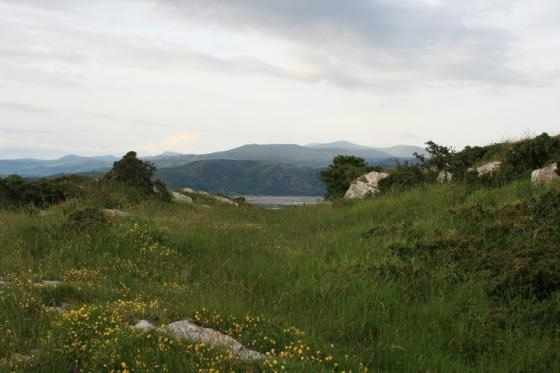Follow the footpath up to the right from the gate hole, turn right into a brambly snicket, then left, and stay against the hedgerow until passing into a small wood. There are footpath markers to assist. You will be able to see this intriguing chamber silhouetted against the sky-line. In your eagerness to get up close to the monument, which forms the edge of two raggedy barbed-wire fences, take two seconds to locate the kissing gate 50 feet up to the right at the edge of the wood; using it is infinitely easier than scrabbling through tetanus-loaded wire.
This secret, compact dolmen – the only one of the Conwy valley’s portal dolmens sporting the customary high portal stones – looks down a tranquil bend in the Conwy valley, towards Llandudno and Great Orme. Although compact, it is deceptively huge from a distance, resulting in the viewer feeling a little surprised on arrival. What is most certainly huge, however, is the capstone. It is utterly gigantic. Despite the fact it has slipped down on the northern side, enough space remains to see the interior of the chamber. It is possible to wriggle inside, which I thought of doing until noticing how the capstone is held in place. (See pictures). Frances Lynch in CADW’s publication Gwynedd says this is not for the squeamish. Quite right she is too – I didn’t fancy the idea of being crushed by a ten-ton capstone, albeit an appropriate way for a Modern Antiquarian to perish. With my wide beam-end, the dislodging of rocks one way or another was sure to occur. When the arresting Kate saw the pictures the next day, she said “Well, at least it would give you an idea of how it feels to be a grain of wheat under a quern stone.”
Although I was initially a tad disappointed in this site, it has stuck in my mind, and on reflection, I enjoyed it very much. It does have something about it which lingers in the psyche. I liked the remaining portal uprights, and the solidity of the site. I imagine if there are bluebells in the wood, it will look most agreeable throughout May. We would have stayed longer – Jane could have made a fab painting of the river vista – but a chilly wind chased us away to the next site.

















































































































































